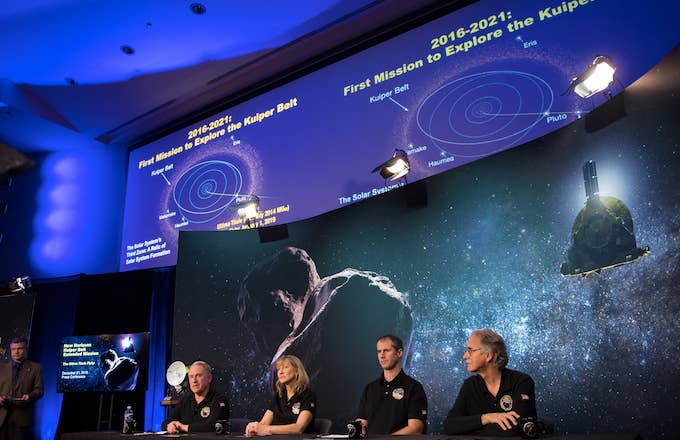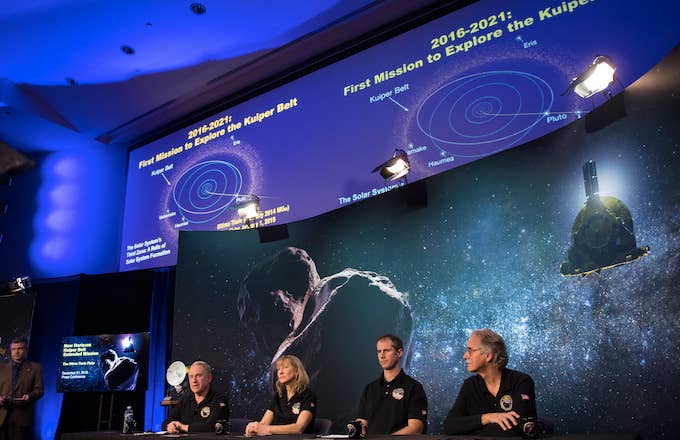
NASA had a lot to celebrate on New Year's Day.
According to the Guardian, the U.S. agency announced that the New Horizons spacecraft successfully completed the most distant space flyby in history. The craft "phoned home" at about 30 minutes after midnight ET, confirming it had passed within 2,200 miles of Ultima Thule, an icy rock in the Kuiper Belt.
New Horizons is now located more than 4 billion miles from Earth.
"We have a healthy spacecraft. We've just accomplished the most distant flyby," Alice Bowman, NASA mission operations manager, said. "We are ready for Ultima Thule’s science transmission, science to help us understand the origins of our solar system.”
The flyby took place about more than a decade after New Horizon's launch, and about three-and-a-half years after the craft zoomed by Pluto, providing the first close-up images of the dwarf planet.
Though New Horizons successfully photographed Ultima Thule, experts say it will take about two years for all the observations to reach Earth. Scientists are convinced the information will unveil important details about the solar system's formation, as Ultima Thule is believed to date back 4.5 billion years.

